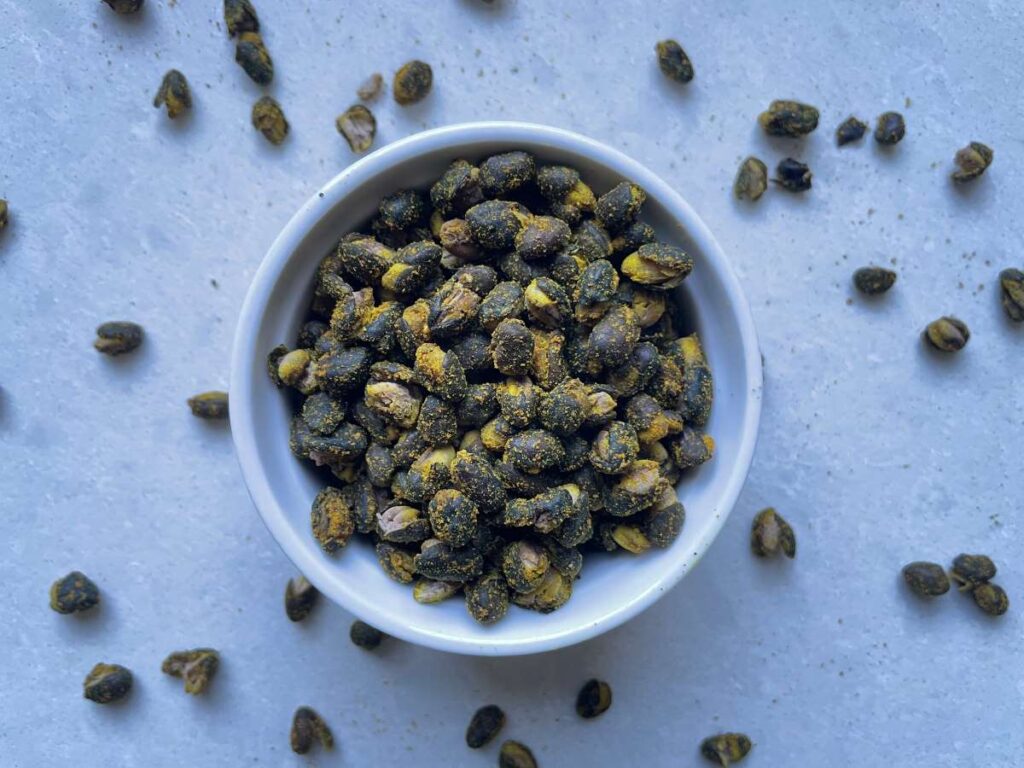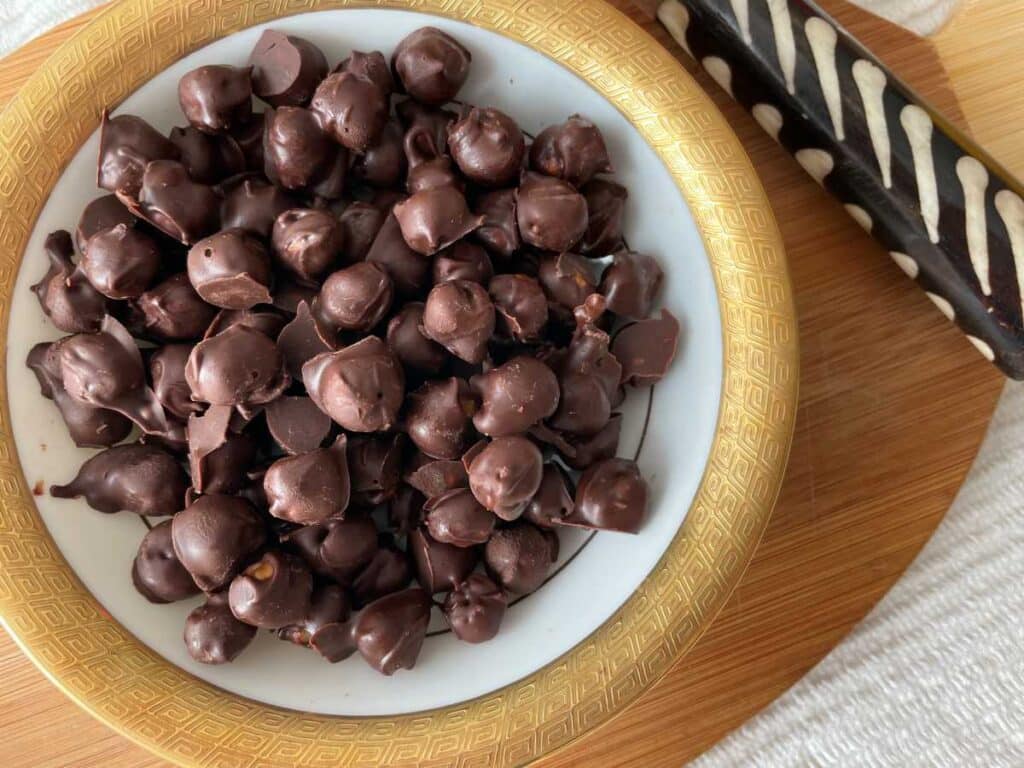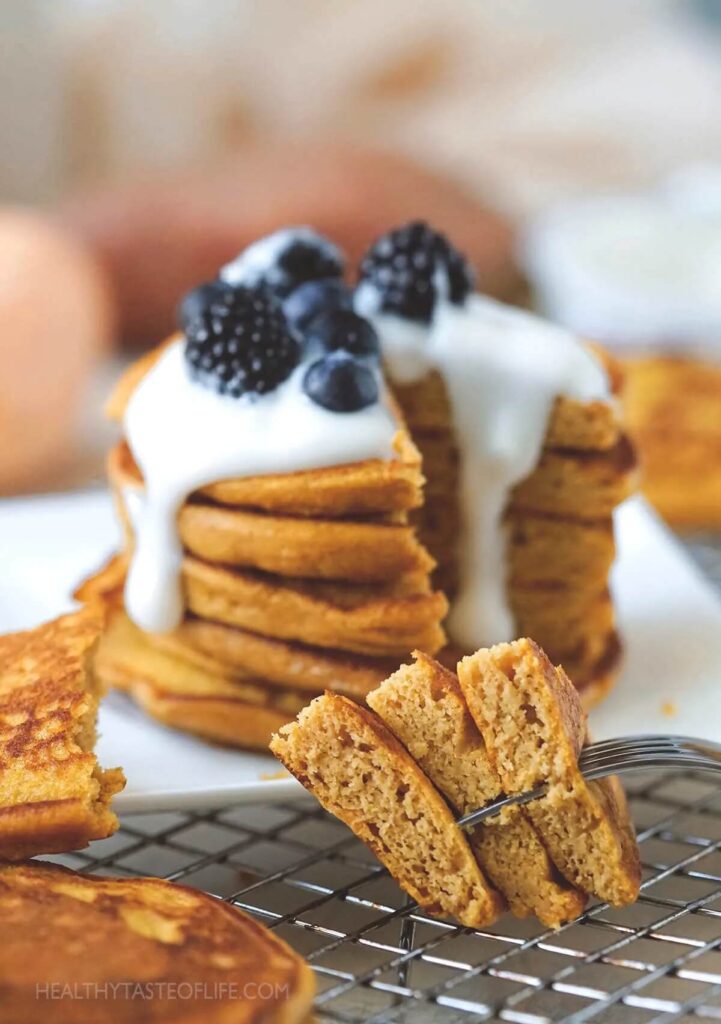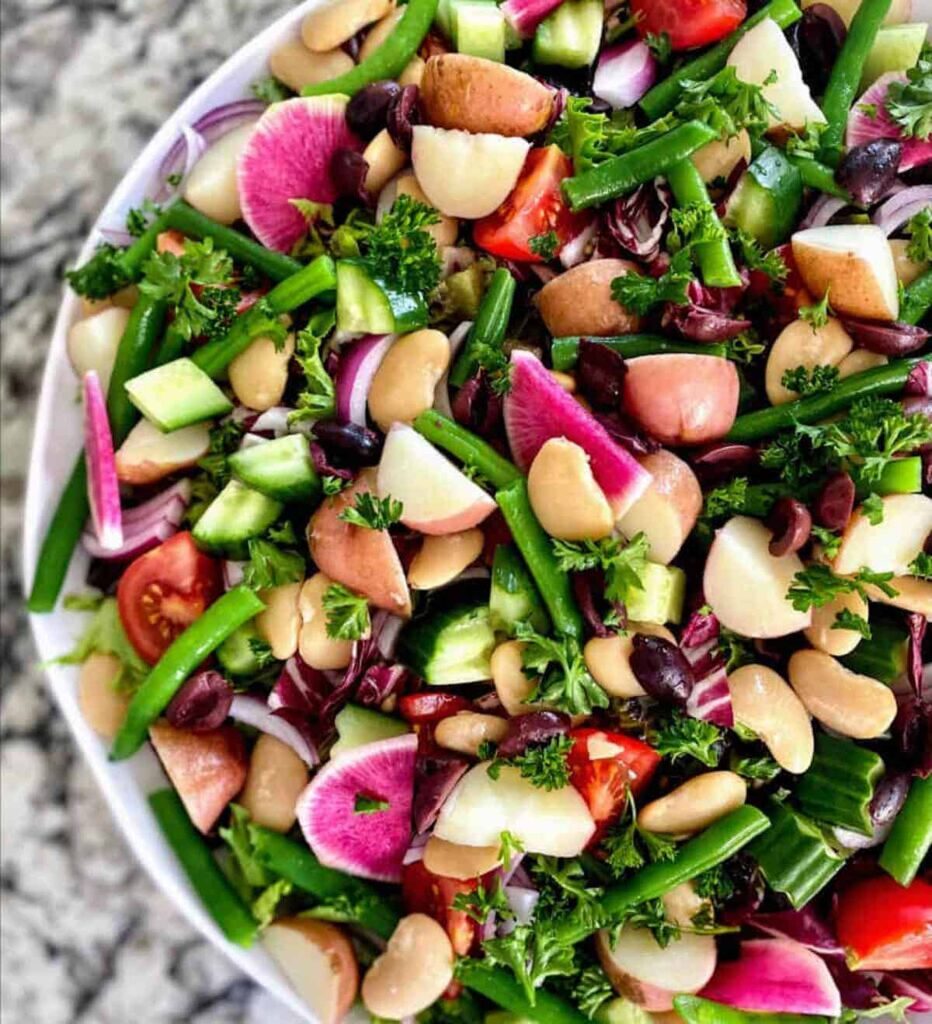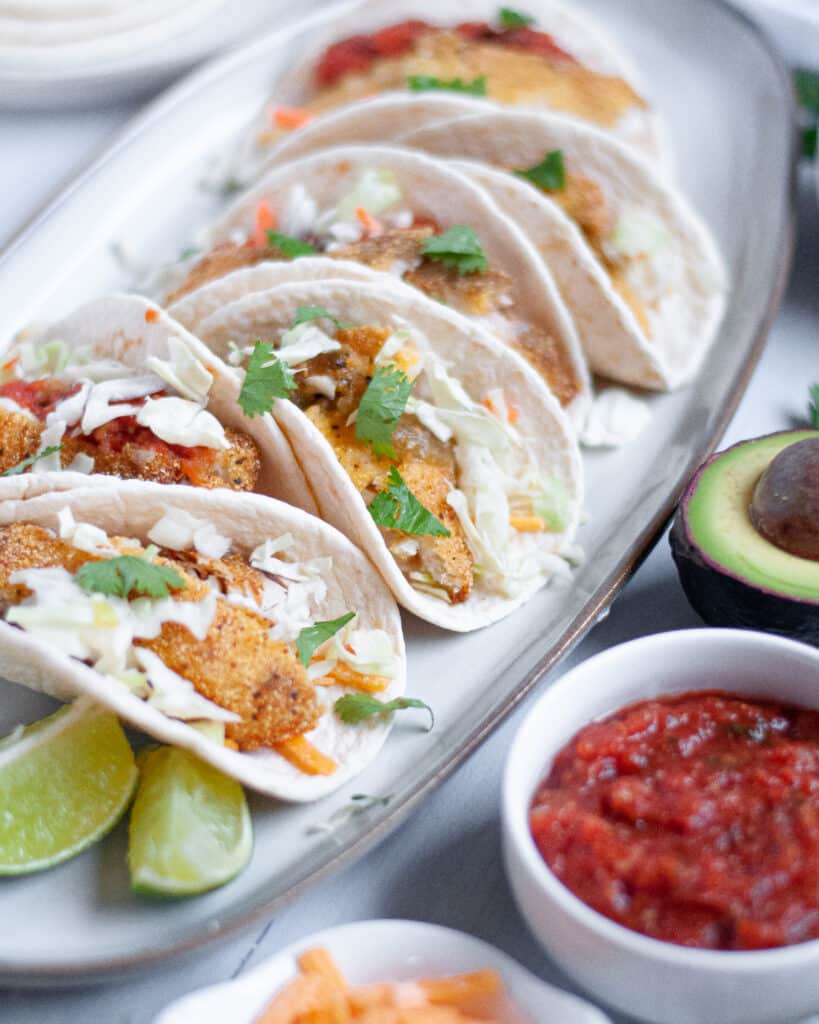This list of 15 foods to avoid with high blood pressure is a crucial list for anyone looking to improve their heart health by lowering their blood pressure. Check out these 11 foods that cause stroke, for a similar article.
High blood pressure, commonly known as hypertension, is often described as the “silent killer” because it shows no symptoms, yet can lead to serious health issues if left untreated like heart disease, heart attacks, and strokes (1).
Both genetics and lifestyle choices contribute to blood pressure. However, making informed and mindful decisions in the kitchen and avoiding these 15 foods that are bad for high blood sugar can establish a lifestyle that promotes heart health.
Key Takeaways
- Sodium is a major contributor to high blood pressure due to its ability to cause the body to retain water, thus increasing blood volume and pressure.
- Processed and packaged foods, fast food, and certain restaurant meals are typically high in sodium. Reading nutrition labels and making mindful choices can help reduce sodium intake.
- Opting for lower-sodium or homemade versions of common high-sodium foods like low sodium bagel, bread, tortilla, low sodium pizza, deli meats, and canned goods like low sodium salsa & dips can significantly decrease sodium consumption.
- The DASH diet is specifically designed to help manage high blood pressure through a focus on nutrient-rich foods, emphasizing vegetables, fruits, whole grains, and lean proteins.
Prevalence
In 2010, it was estimated that 31.1% of adults (1.39 billion) worldwide were living with high blood pressure (2). And in 2021, hypertension contributed to 691,095 deaths in the United States alone, with only 1 in 4 adults having their hypertension under control (3).
The good news is there are numerous strategies that can help manage blood sugar, and nutrition being one of them, so let’s dig into what’s recommended!
What Nutrients Cause High Blood Pressure?
Sodium
Sodium, a mineral found in salt, is a large contributor to high blood pressure. When it is consumed, the body tries to maintain a balance by holding onto water so that excess sodium can be diluted (4).
This increased water retention elevates blood pressure, which is why the American Heart Association (AHA) recommends limiting sodium intake to less than 2,300 milligrams per day, while the ideal limit is 1,500 milligrams per day for adults (5).
Sodium Consumption In North America
In North America, salt intake tends to be higher than recommended levels, with an average intake of 3,400 milligrams per day (6). This is more than half of the ideal limit an adult should be consuming per day!
What Food Is High In Sodium?
Most sodium is found in processed and packaged foods like canned soups, processed meats (bacon, sausages), packaged snacks, and even foods such as cereal and certain bread (7).
Meals from fast-food establishments are particularly high in sodium due to the use of processed ingredients, and often, salt is added for flavor. This is why it is important to be mindful of sodium intake and to read nutrition labels so that you can make informed choices about your meals.
If you do enjoy eating out and are looking for low sodium choices, be sure to watch my video series on heart healthy foods at take out restaurants.
Still unsure of what foods to reduce and which to add? Read on!


15 Foods To Avoid With High Blood Pressure
Here is the list of 15 foods to avoid with high blood pressure!
1. Breads And Rolls
Commercially produced breads and rolls can often be high in sodium. It’s important to carefully read the nutrition facts label when purchasing these items.
Pay close attention to the sodium content listed on the nutrition facts table, and review the ingredient list for words like sodium bicarbonate (baking soda), sodium nitrate, monosodium glutamate (MSG), or sodium benzoate, which also contribute to the overall sodium content.
Finally, you can also look for low-sodium nutrition claims which are sometimes prominently displayed on the front of the package. These can guide you towards bread choices that are better suited for managing high blood pressure.
2. Pizza
Pizza is very high in sodium because often includes high-sodium ingredients such as:
- Processed meats
- Canned toppings like olives, capers and pickled vegetables
- Cheese
- Canned sauce
- Salty dough
To make a healthier choice, consider tweaking the traditional pizza recipe. Opt for alternative toppings that are lower in sodium, switch to a cauliflower crust, or choose a whole wheat crust.
These changes not only reduce the sodium content but also increase the fiber and overall nutritional value of the pizza. By making these simple modifications, you can enjoy this popular dish while better managing your sodium intake and contributing positively to your heart health.
Try this easy low sodium pizza sauce!
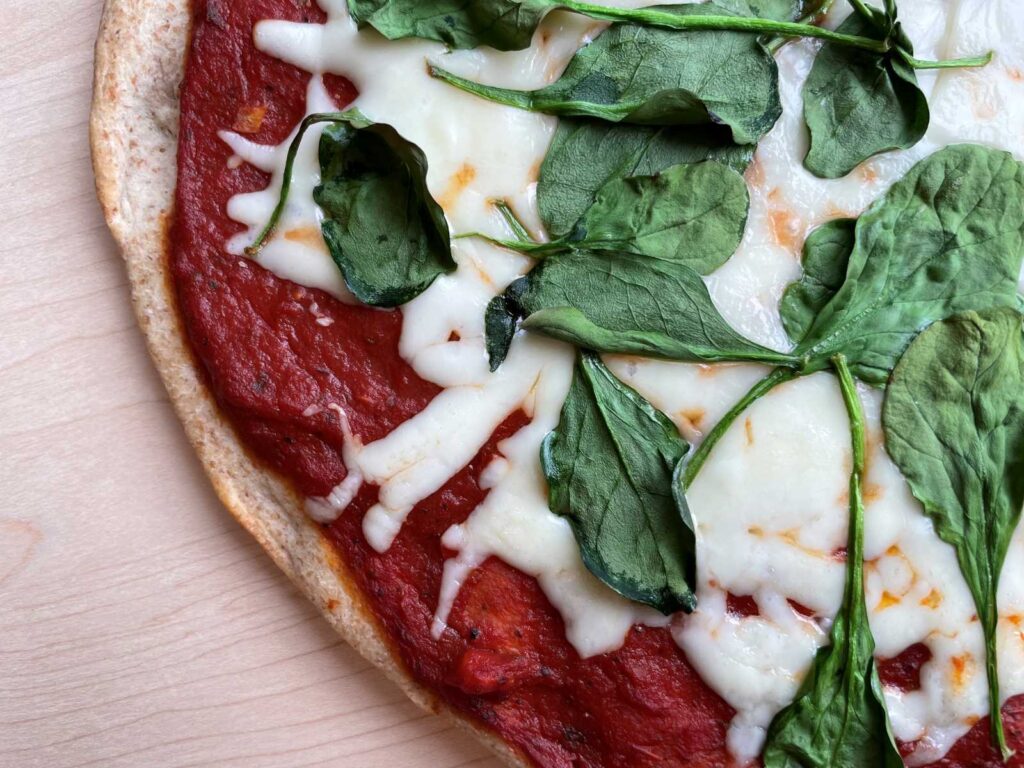
3. Deli Meat
Deli meats are often high in sodium and may include preservatives that can negatively affect heart health (8).
To make a healthier choice, opt for deli meat alternatives like roasted turkey or chicken breast, canned low sodium salmon or tuna, egg based options, hummus or other bean spreads, fresh or grilled vegetables or even avocado toast (since avocado can lower blood pressure too)!
These options typically contain less sodium and fewer preservatives. Additionally, many brands now offer low-sodium versions of deli meats. These are conveniently identifiable by reading the nutrition labels.
Check out this video (by me!) with 5 great deli meat alternatives to try.
4. Cured Meats
Cured meats, like bacon and sausage, are known for their high sodium and saturated fat content. These characteristics are a result of the curing process, which often involves using salt and other preservatives to enhance flavor and prolong shelf life.
For healthier alternatives, try opting for leaner meats like chicken or turkey. It’s also important when selecting chicken or turkey, to choose unprocessed versions. Processed poultry products can sometimes contain added sodium or other preservatives, much like their cured meat counterparts.
Additionally, you can look for ‘uncured’ versions of traditional cured meats. These products are often made without synthetic nitrates or nitrites and usually contain less sodium. However, it’s still important to read the labels, as some ‘uncured’ products may still be high in natural salts.
5. Canned Soups
Some canned soups have elevated sodium levels to enhance flavor and are used for preservation purposes.
It is best to read the nutrition label, compare brands and choose soups with the lowest sodium. You can also consider making your own soup like the Low Sodium Chicken Noodle Soup. This gives you complete control over the ingredients, their quantities and the amount of salt.
Adding fresh wholesome ingredients can also be helpful in lowering blood pressure, which I will touch on a bit later.
Or check out this list of DASH diet approved soups.
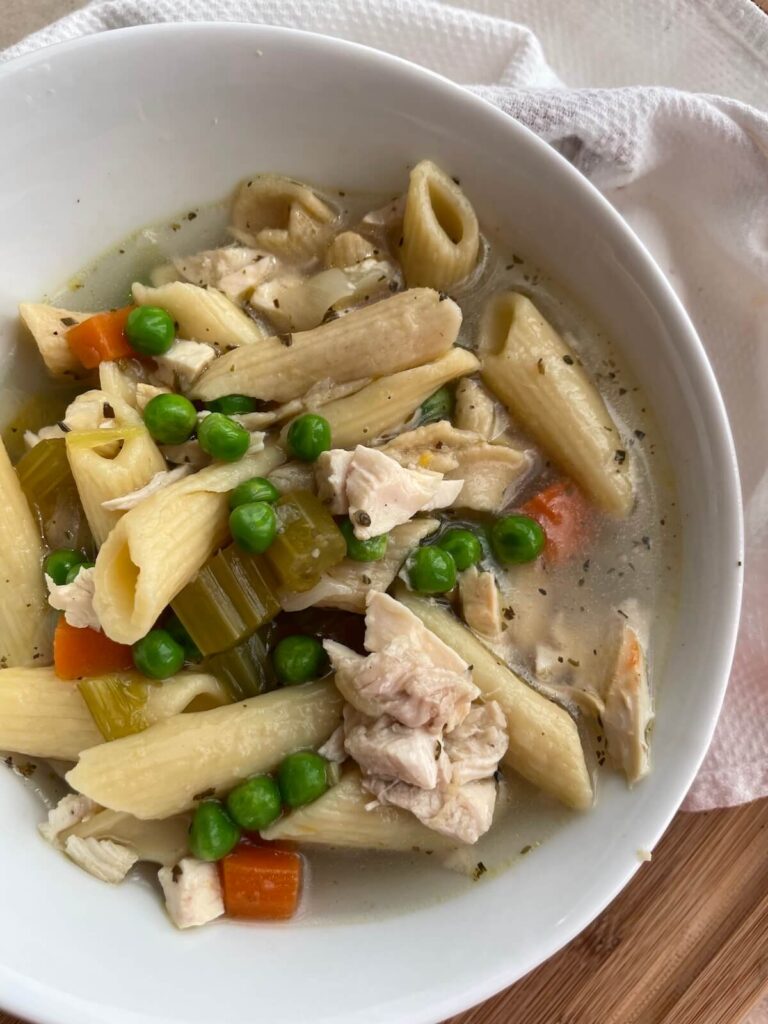
6. Pickles
Pickles, as well as other pickled foods, can be high in sodium which is used in the pickling process as a preservative and flavor enhancer.
Consider reducing the quantity or the amount you eat, as too many can result in increased blood pressure. Additionally, making your own pickles at home with vinegar and less salt can be a healthy alternative.
7. Canned Tomato Products
While tomatoes themselves are a healthy and nutritious option, canned tomato products often come with added salt for flavor enhancement and to extend the shelf life.
Canned tomato products include tomato sauce, tomato paste, spaghetti sauce and diced tomatoes.
To mitigate this, be sure to read the labels and look for tomato products with “no added salt” or “low sodium” nutrition claim on the front of the package.
8. Frozen Lunch And Frozen Dinner Meals
Pre-packaged foods such as frozen lunches and dinner meals make the list of 15 foods to avoid with high blood pressure. Although they are often convenient, but can contain high levels of sodium for taste and preserving the food. Such meals often contain significantly more sodium than what would be used in home-cooked meals.
As a healthier alternative, consider meal prepping. This practice involves preparing and cooking your meals in advance, giving you complete control over the ingredients and portion sizes. By doing this, you can significantly reduce the sodium content in your meals, tailor them to your dietary needs, and ensure they are packed with nutrients.
Meal prepping also offers the convenience of having ready-made meals on hand, similar to pre-packaged options, but much healthier. And these meals can be frozen, just like store-bought frozen meals, making them convenient for later use.
Check out my recent meal prep video for inspiration.
9. Chips And Salty Snacks
Potato chips and salty snacks have high amounts of both sodium and unhealthy fats.
For healthier options, consider trying vegetable chips, popcorn, unsalted nuts or seeds or even roasted black beans or chocolate covered chickpeas.
Here is a great list of low sodium snacks to try!
10. Cheese
While cheese is a valuable source of calcium, it’s important to be aware that some varieties can be high in saturated fats and salt. To make a healthier choice, always check the nutrition facts label on the cheese packaging.
Opt for low-sodium and reduced-fat varieties and enjoy cheese in moderation as part of a balanced diet, keeping an eye on portion sizes and pairing it with healthier foods.
11. Caffeine And Energy Drinks
While moderate caffeine consumption is generally acceptable, excessive intake, especially from sources like energy drinks, can cause a temporary spike in blood pressure. Green tea is a great alternative, offering a moderate caffeine level and a rich array of antioxidants. It provides a steadier, more gradual energy boost compared to high-caffeine drinks. Additionally, green tea has been associated with various health benefits, including improved heart health and a potential role in weight management.
12. Condiments
Many condiments, including soy sauce and ketchup, are high in sodium, which can contribute to elevated blood pressure when consumed in large quantities. Opting for low-sodium versions or preparing homemade low sodium sauces allows for better control over sodium intake.
Using natural ingredients like olive oil, balsamic vinegar, lemon juice, and fresh herbs can enhance flavors without adding excessive sodium. Additionally, experimenting with spices and fresh ingredients can introduce a variety of flavors to meals, reducing the reliance on high-sodium condiments and promoting a healthier diet overall.
13. Packaged Baked Goods
Packaged baked foods, especially commercially produced, may contain trans fats and high levels of sugar and salt which can increase your blood pressure.
Instead, try baking your own or search for healthier alternatives such as Chia Banana Bread. That way, it will be easier to control ingredients and lower blood pressure.
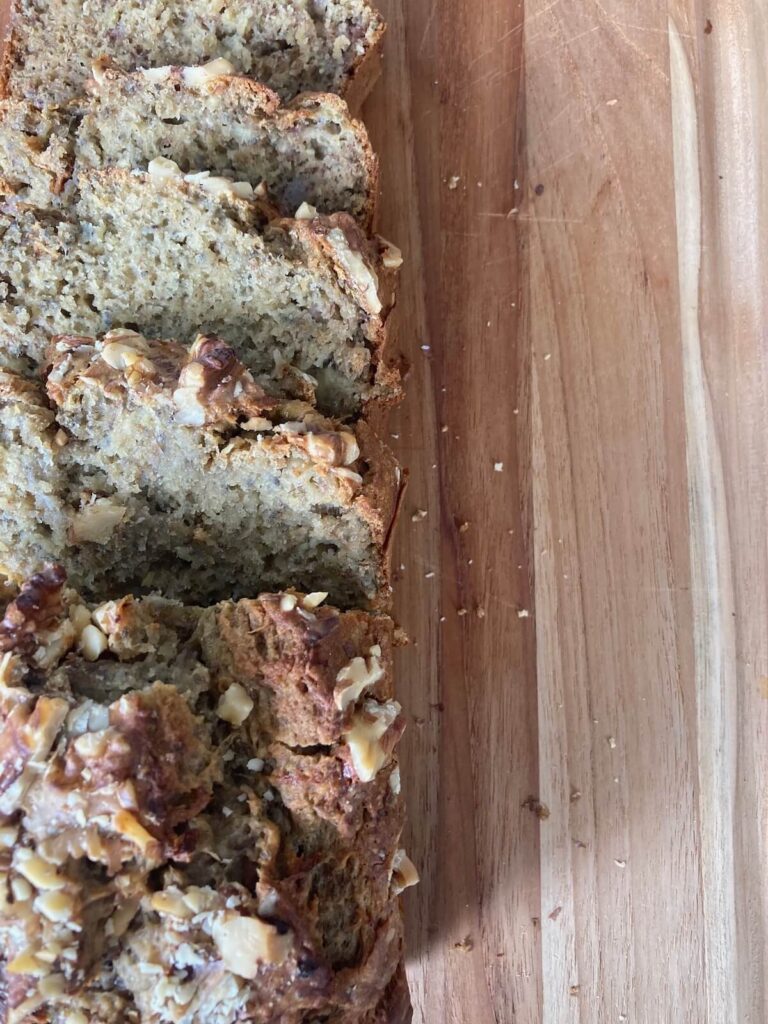
14. Canned Vegetables
You may not be surprised that canned vegetables make this list of 15 foods to avoid with high blood pressure, but I added it because as a dietitian who reviews diets daily, I noticed this is a sneaky item that could be increasing your blood pressure.
Similarly to canned soups and tomatoes, canned vegetables have added salt for preservation and flavor. Rather than consuming canned vegetables, try choosing fresh or frozen alternatives for a healthier option.
When purchasing frozen, ensure the only ingredient on the label is the vegetable, and no salt has been added to the package.
15. Fast Food
Fast food like hamburgers, tacos and burritos are typically high in sodium, trans fats, saturated fats, and calories, all of which can negatively impact blood pressure and overall heart health.
The excessive sodium content in fast food can cause the body to retain water, leading to an increase in blood pressure. Saturated and trans fats can contribute to the buildup of plaque in the arteries, further elevating blood pressure and increasing the risk of heart disease.
For healthier options, consider opting for leaner proteins like grilled chicken, fish, beans, or tofu which is consistent with the DASH diet when eating away from the house. Additionally, paying attention to portion sizes can help manage calorie intake and reduce the risk of blood pressure-related issues.
Check out my posts on low sodium burger king, low sodium McDonalds and low sodium subway. Making informed choices and favoring home-cooked meals over fast food can significantly benefit blood pressure management and overall health.
16. Bonus – Alcohol
Alcohol consumption can have a significant impact on blood pressure. Drinking alcohol in moderate to high amounts can lead to a temporary increase in blood pressure, and repeated excessive drinking can result in long-term blood pressure elevation.
The American Heart Association recommends that if you do drink alcohol, do so in moderation. This typically means up to one drink per day for women and up to two drinks per day for men. Reducing alcohol intake can help lower blood pressure and decrease the risk of developing hypertension.
For individuals with high blood pressure or those at risk of developing it, it’s advisable to limit alcohol consumption even more or avoid it altogether. Opting for non-alcoholic alternatives (like sparkling water, mocktails, herbal teas, juices for examples) and monitoring blood pressure regularly can help manage and prevent high blood pressure complications.
Check out this list of juices for high blood pressure like this pineapple juice to lower blood pressure or DASH diet smoothies!
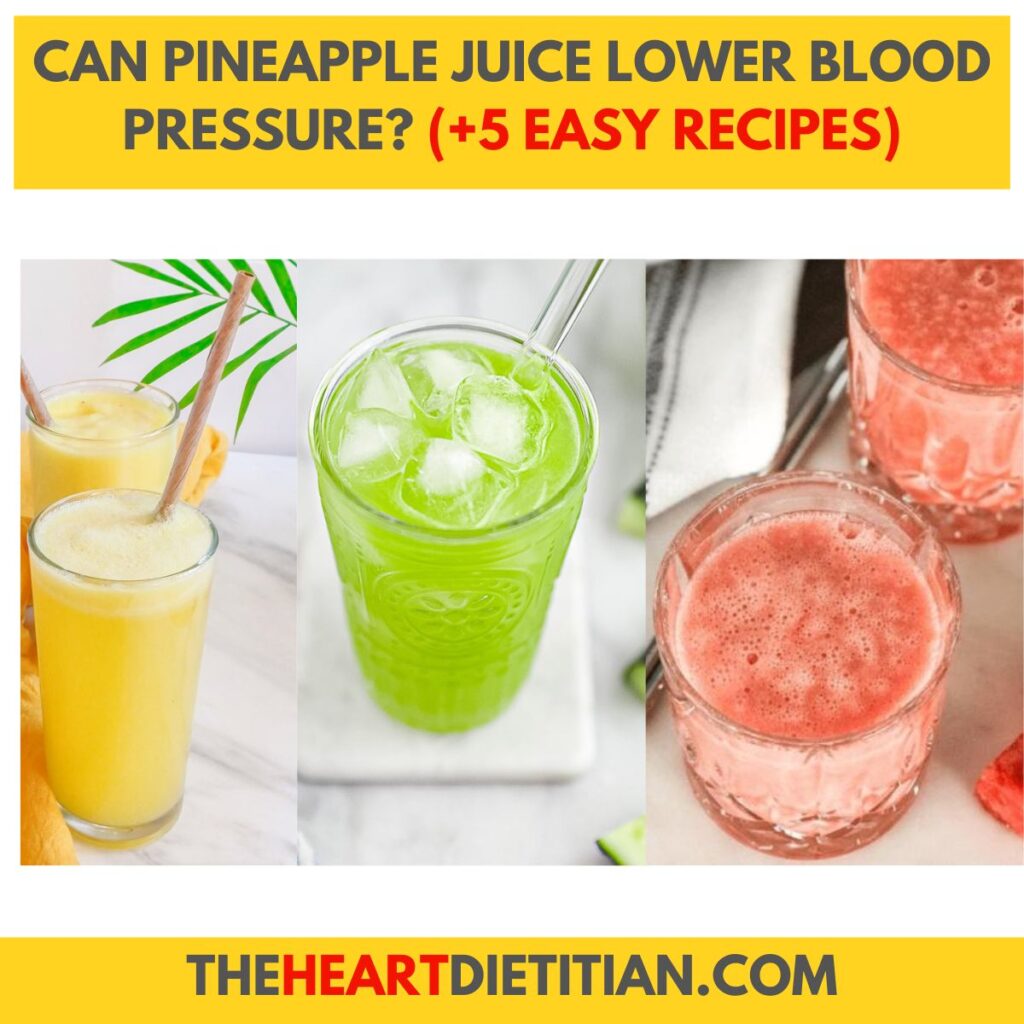
Foods To Eat
Now I can’t let you go that easily! Yes, I want you to eat less of the list of 15 foods to avoid with high blood pressure, but I also want to let you know there are foods you CAN eat too!
Try The DASH Diet
When it comes to hypertension, a diet known as the DASH diet (Dietary Approaches to Stop Hypertension) has been proven beneficial. It is a healthy-eating plan specifically designed to help and manage high blood pressure by focusing on nutrient-rich foods.
The DASH diet includes the following food groups: vegetables (4-5 servings per day), fruits (4-5 servings per day), grains (6-8 servings per day), dairy (2 or fewer servings per day), lean protein like low sodium salmon (2 or fewer servings per day), nuts, seeds and legumes (4-5 servings per week), fats (like avocado) and oils (2-3 servings per day), and a reduction to sweets.
These food groups include potassium, calcium, and magnesium, which can be found in fish, poultry, beans, nuts, and more (9). These minerals help control blood pressure.
Overall, the DASH diet has shown positive results (in fact it can lower blood pressure as much as some medications on the market!) in lowering blood pressure levels within a few weeks to a few months.
Check out this comprehensive list of 39 foods that can lower blood pressure.
Nutrients In The DASH Diet That Can Reduce High Blood Pressure
Potassium
Potassium is like a balancing force against sodium in our body. While sodium can raise blood pressure by making our body hold onto more water, potassium helps keep things in check. It does this by helping our body get rid of extra sodium through our urine, and also by helping our blood vessels relax also known as vasodilation. This can help lower high blood pressure (10).
Magnesium
Magnesium plays a large role when it comes to promoting vasodilation, as well as muscle relaxation. It allows smooth muscles in blood vessels to relax, which contributes to the widening of blood vessels and lowering of blood pressure (11).
Calcium
We know that calcium is important for our bones and teeth, but it can help lower blood pressure too!
Calcium also helps blood vessels contract and relax, and also promotes vasodilation. Like magnesium, it also aids in muscle contraction. This includes the smooth muscles in blood vessels (12).
Sample Meal Plan To Lower Blood Pressure
Are you interested in lowering your blood pressure? If the answer is yes, try out these recipes that are low sodium, good for your health, and taste delicious to boot!
Below is a sample meal plan, but consider exploring the wide variety of dishes available other low blood pressure recipes here:
Breakfast:
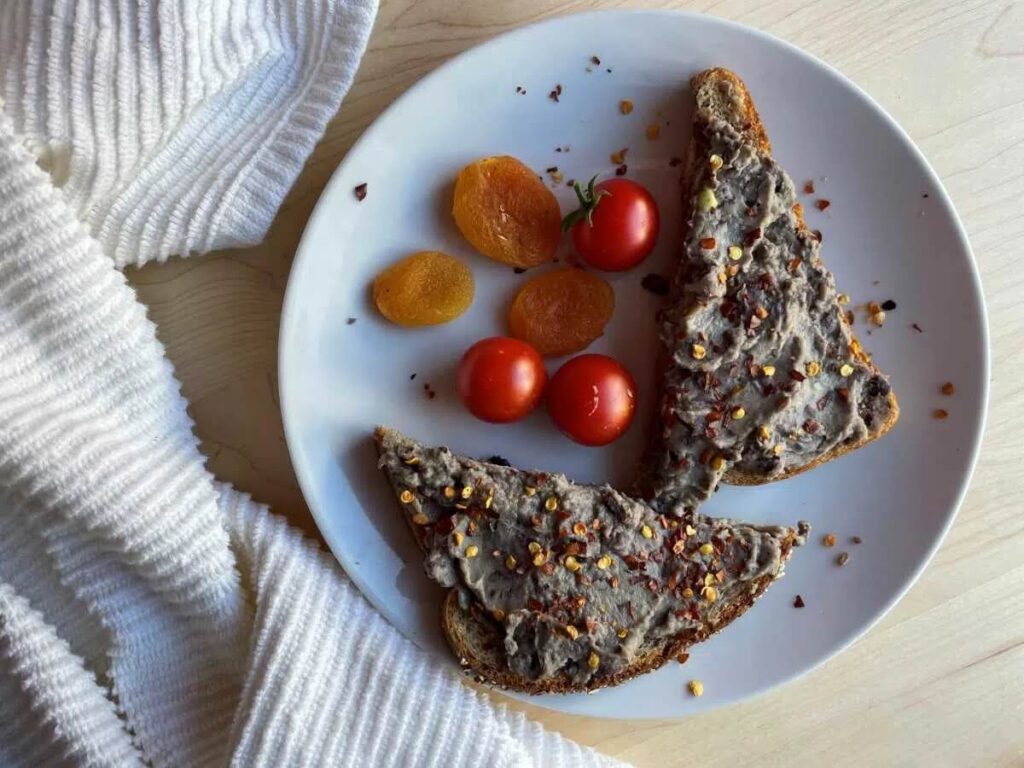
This meal is not only super easy to make, but also a delicious breakfast that includes protein and fiber. Best of all, it’s healthy! You could also try different toppings, such as lemon juice, black pepper, diced onion, minced garlic, tomatoes, or even chili peppers. The options are truly limitless!
Lunch:
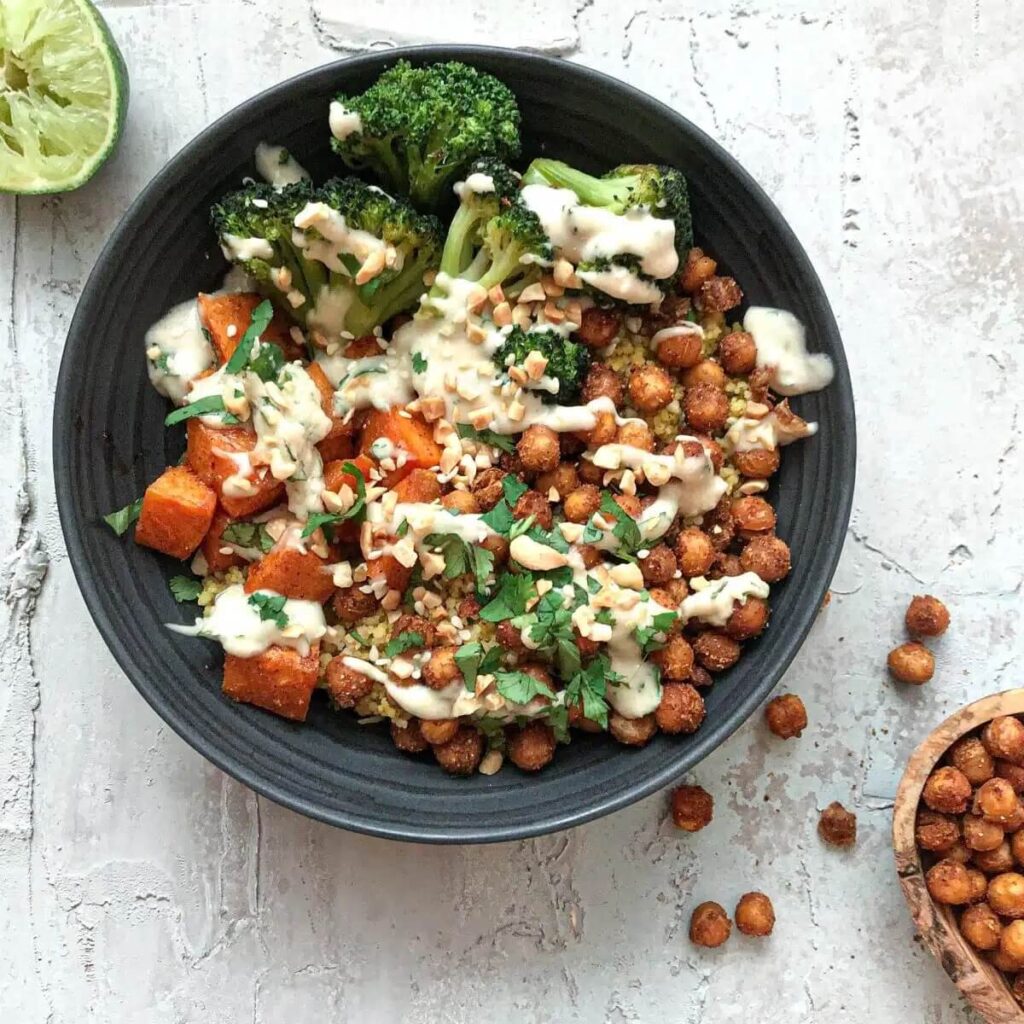
The Mediterranean chickpea quinoa bowl is tasty, full of protein, and packed with fiber. It’s an easy prep and the use of beans, quinoa, and vegetables offer fiber and plant-based protein that aids in lowering blood pressure and cholesterol. You can even change the dressing up depending on what flavor you want!
Dinner:
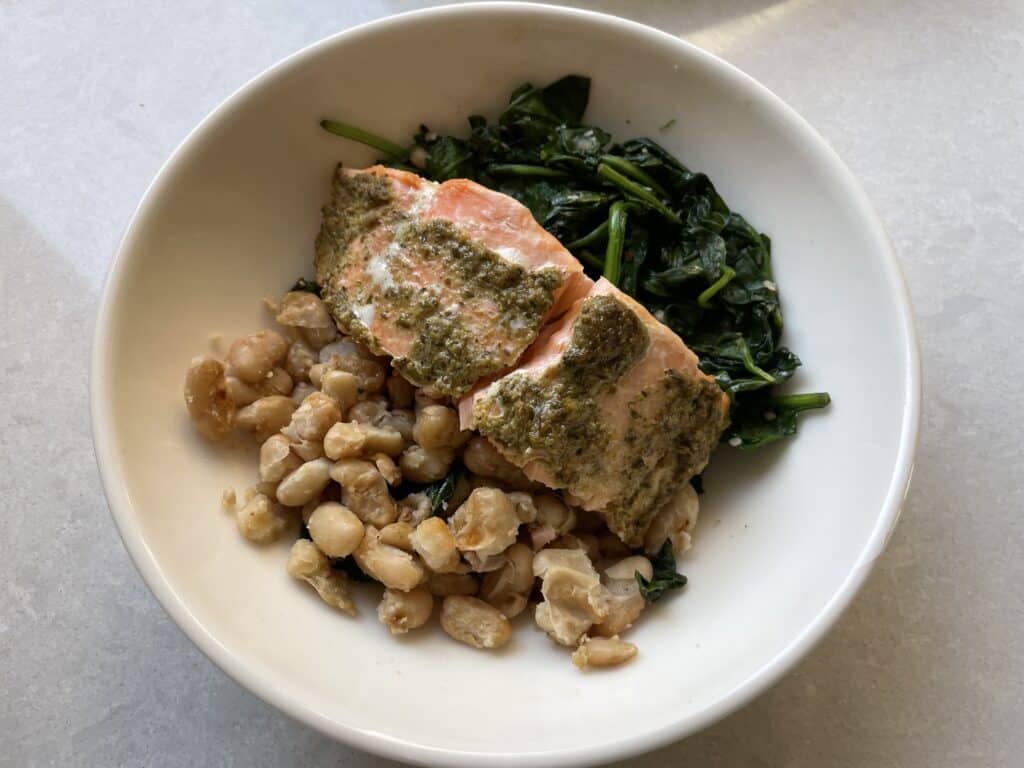
This basil pesto butter salmon meal is easy to make and delicious. It’s full of omega 3 fatty acids, soluble fiber, and nutrients, all of which are super healthy and aid in reducing blood pressure. Best of all, it only takes around 20 minutes to make!
Dessert/Snack:
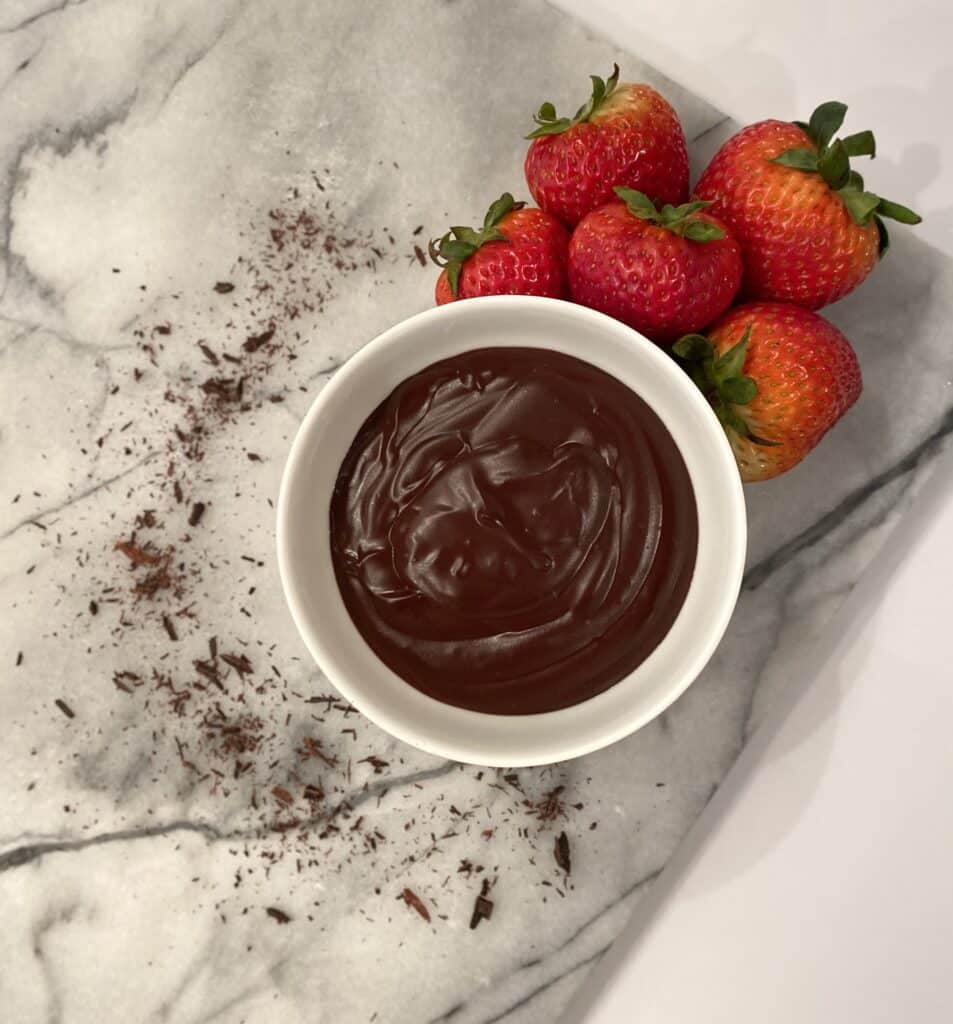
Oat milk chocolate pudding is perfect if you want a snack, or a dessert fix that is healthy, nutritious, and tastes exactly like traditional dairy pudding.
Other Recipes
Final Thoughts
Prioritizing a balanced and nutrient-rich diet is important for maintaining blood pressure and cardiovascular issues. The foods we consume, and lifestyle changes we make are significant when it comes to our body’s overall health.
As we’ve explored the 15 foods to avoid with high blood pressure, it’s clear that minimizing sodium intake and opting for whole, unprocessed foods is key. Packaged and fast foods contribute to excess sodium, unhealthy facts, and more. Reducing our consumption of these items and cooking from home more often allows us to take charge of our heart health. Check out my top 10 low sodium cookbooks for more inspiration!
It’s crucial to approach dietary changes while also considering individual health conditions, preferences, and nutritional needs. Don’t forget, consulting with a healthcare professional can provide a personalized guide suited for your needs and remember, even small changes can lead to significant improvements!
What food are you going to STOP eating to lower your blood pressure? Tell me below! I’d love to hear from you.
Article Written By Alexandra Hussar. Edited and reviewed by Veronica Rouse, MAN, RD, CDE., MAN, RD, CDE


